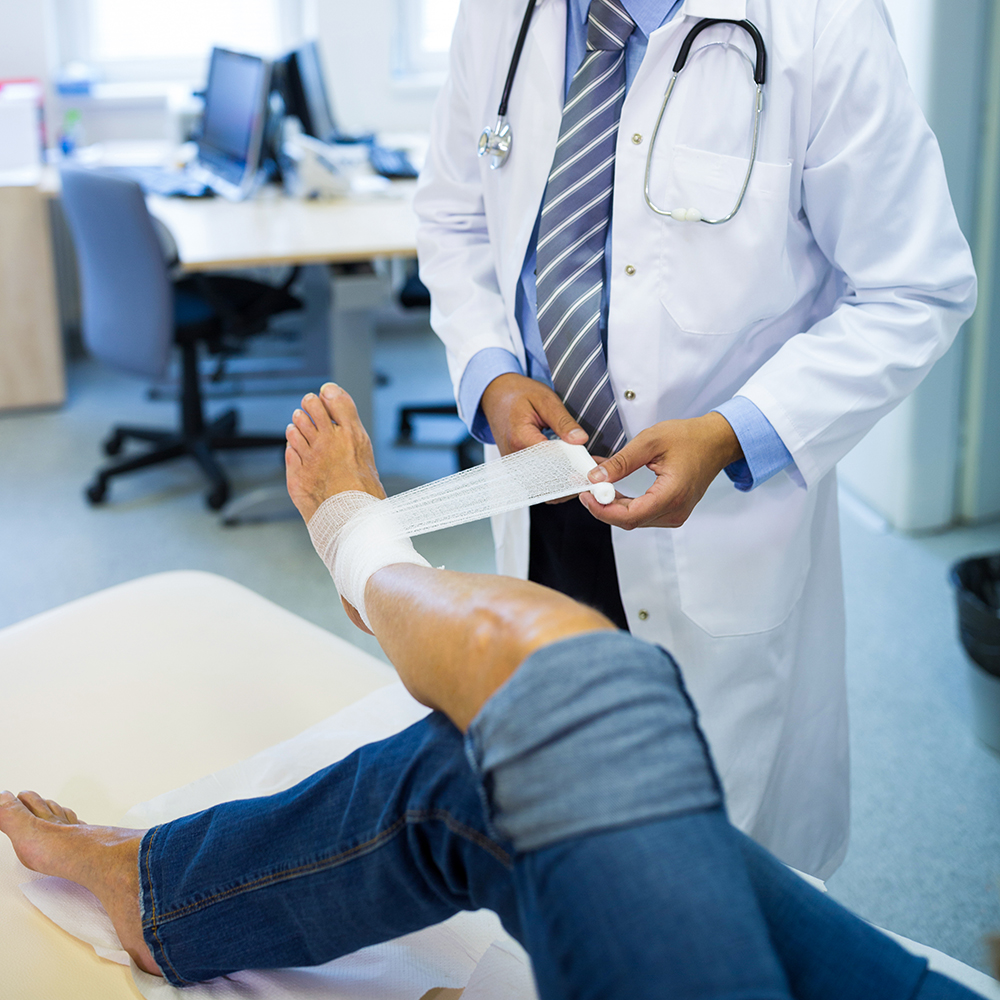The information provided on this website is intended for general informational purposes only. It does not constitute definitive treatment advice. For any questions or issues related to pain management, it is crucial to consult a medical professional. A thorough evaluation is essential for an accurate diagnosis and treatment plan.
×On This Page
Our Brooklyn pain specialists are best in region. We were selected to be a part of the international medical team for the Rio Olympic Games.

Just like the name suggests, heel pain is an intense pain that the individual experiences whenever they use one or both of the affected heels. Heel pain is the most common problem that affects the ankle and foot, and that is because of the immense pressure placed on the foot at any given time. More than 50 tons of stress is exerted on the foot in every kilometer you walk, and this stress is amplified when carrying heavy loads and running. For these reasons, heel pain is quite common.
Rarely, it is a serious medical condition. However, it can interfere with daily physical activities and particularly with exercises.

Heel pain develops when the plantar fascia becomes damaged. The foot is not flat, but it has a slight curve from the bottom of the heel to the sole of the foot where the phalanges of the toes begin. Maintaining this arch on the foot is a band of muscle called the plantar fascia, which is tough but flexible. The function of this muscle is to maintain the flexibility of the arch and act as a shock absorber when walking.
Just like other muscles, though, the plantar fascia can also become damaged, and the foot loses its flexibility and shock-absorbing properties. In addition, the damage to this essential muscle causes pain, particularly on the bottom and back of the heel.
Normally, the plantar fascia can handle the pressures exerted on it, but it can also be damaged, due to various reasons:
The most common causes of heel pain include:
Heel spurs develop when the lining that covers the heel is in a continuous stretching. Over the time, pieces of the lining can break off.
Achilles tendinitis is an inflammation of the Achille tendons. This medical condition is common among runners, joggers, professional dancers, professional athletes, etc.
Plantar fasciitis is an inflammation of the plantar fascia, a thick band of tissue which runs along the end of your foot. It is more common among joggers and runners, but it can also occur due to wearing shoes that do not fit correctly.
Pain on the bottom of the heel and around the back - Most of the time, only one heel causes heel pain, but in almost a third of the cases, both heels cause pain. The latter can make movement very painful, causing pain whenever they walk. The pain experienced is usually heightened while walking or when you use the foot after a long period of inactivity such as in the morning after sleep
Tenderness and swelling on the bottom of the foot. When damaged the plantar fascia becomes inflamed, and causes swelling

The diagnosis is usually done through a physical examination where the doctor checks for any swelling and feels around the foot to check for the points of tenderness.
Usually, heel pain goes away, on its own after some time, but there are a number of interventions that can be made if the pain is extreme. NSAIDs are non-steroidal anti-inflammatory drugs that help to reduce the pain and swelling. This is not always necessary, though, and resting the affected heel is usually the solution along with cold compression.
To help in the recovery, simple stretching exercise and light walks are also recommended to get the plantar fascia healing faster. Shoe inserts are also advised to help prevent further damage of this muscle.
Even though heel pain is not a serious medical condition it can interfere with daily activities. Here are some tips how to prevent heel pain.

The goal of our specialists is to diagnose your problem, define a personal treatment plan based on your condition and get you back on the track with minimal downtime. Conservative treatment is suggested first. However, in severe cases when conservative treatment does not solve your problem and relieve your heel pain, surgical treatment might be needed..
Today was my first time. I found the staff were very nice and accommodating. The office space and waiting area was big enough to accommodate my wheelchair without me feeling like I was in everyone’s way, I was seen on time and the experience was refreshing. The staff took time to review my medical history thoroughly and discuss a plan of action that best suited my needs in order to be comfortable. I hope this type of attention and professionalism will continue because they made my visit today most pleasant
“Kris Watson”I’m loving this place so far. 3 appointments so far and I’m in and out. It’s great that you don’t have to sit for 2 hrs l most places. And the staff is pleasant. The front desk could be a little more cheerful, the First Lady I worked with was very nice, she was smiling and joking with me. Downstairs staff is also, but reception staff can be a little more friendly, not just acting all business. Take a minute to smile. But they are better than the last robotic place I was at, and I left after a waiting a hour. I’ve had 3 appointments so far. So I’m pleased. Thank you to the staff
“Angie Rodgers”The most advanced pain management center, Brooklyn pain management doctors and specialists at Pain Physicians NY offer unique, individualized approach to manage your heel pain. We are using the most effective pain management options including Platelet Rich Plasma (PRP) and Corticosteroid Injections and utilizing the latest technologies available in USA.
Pain Management Brooklyn
2279 Coney Island Ave, Brooklyn, NY 11223
(718) 998 – 9890